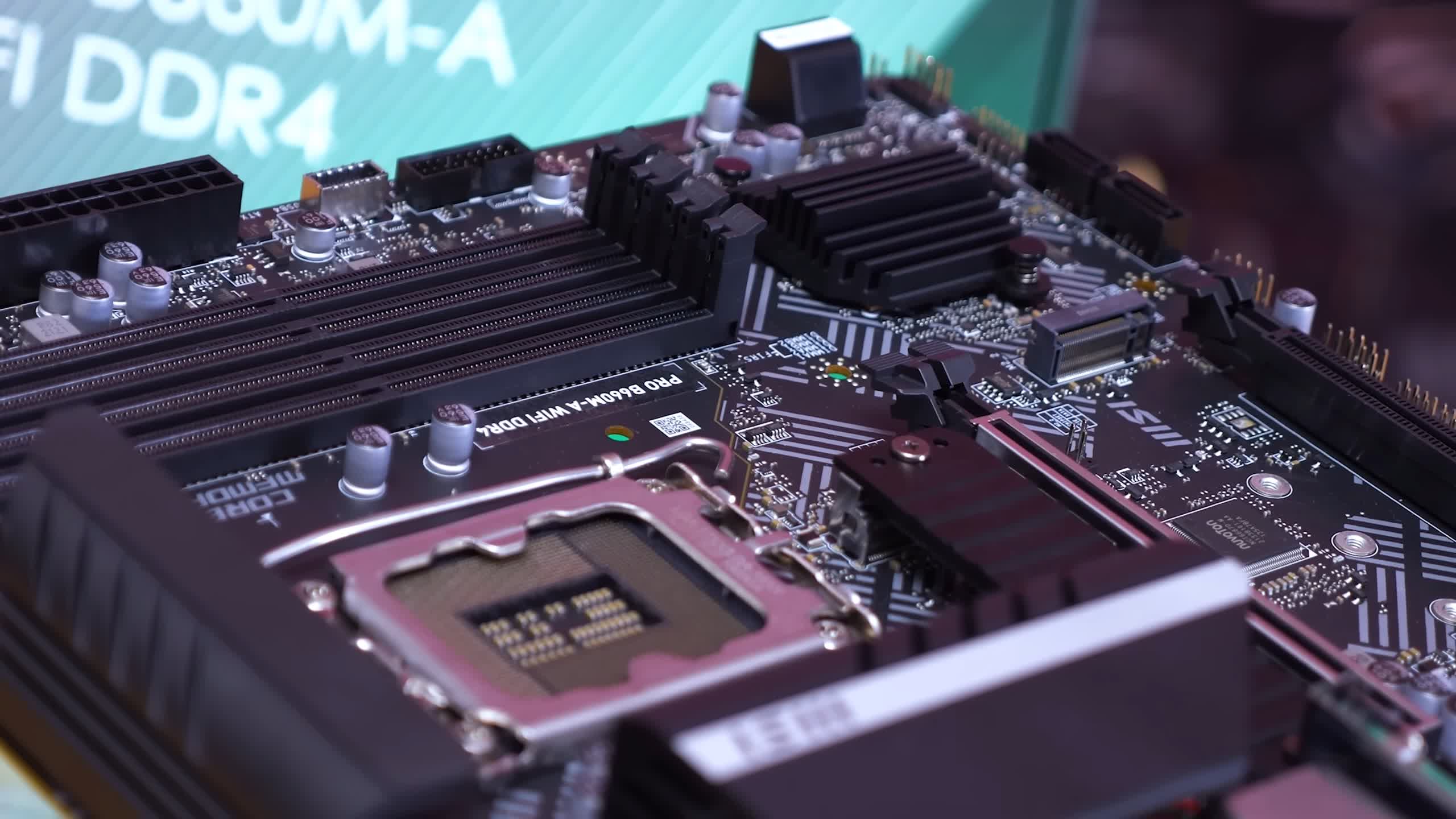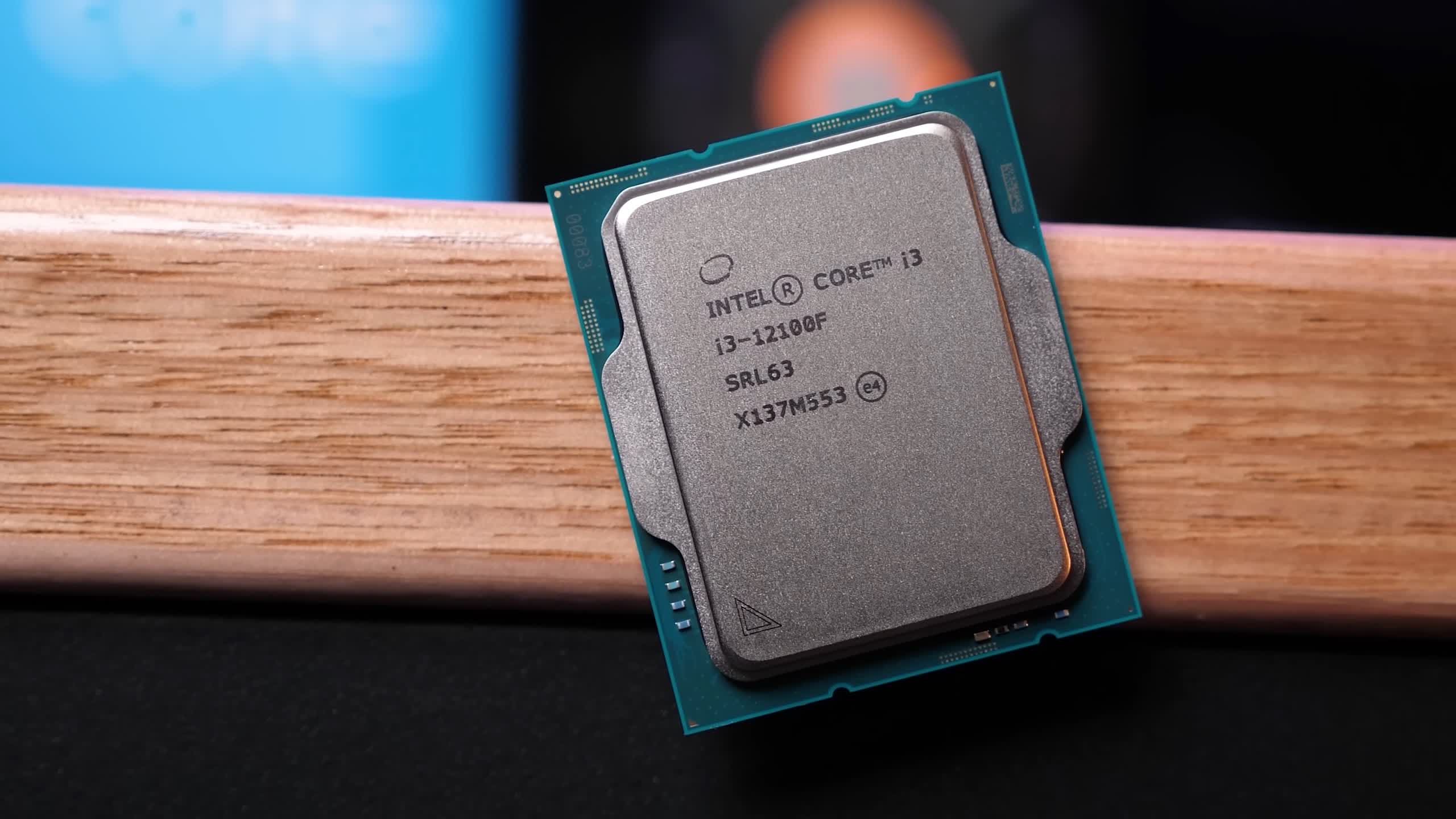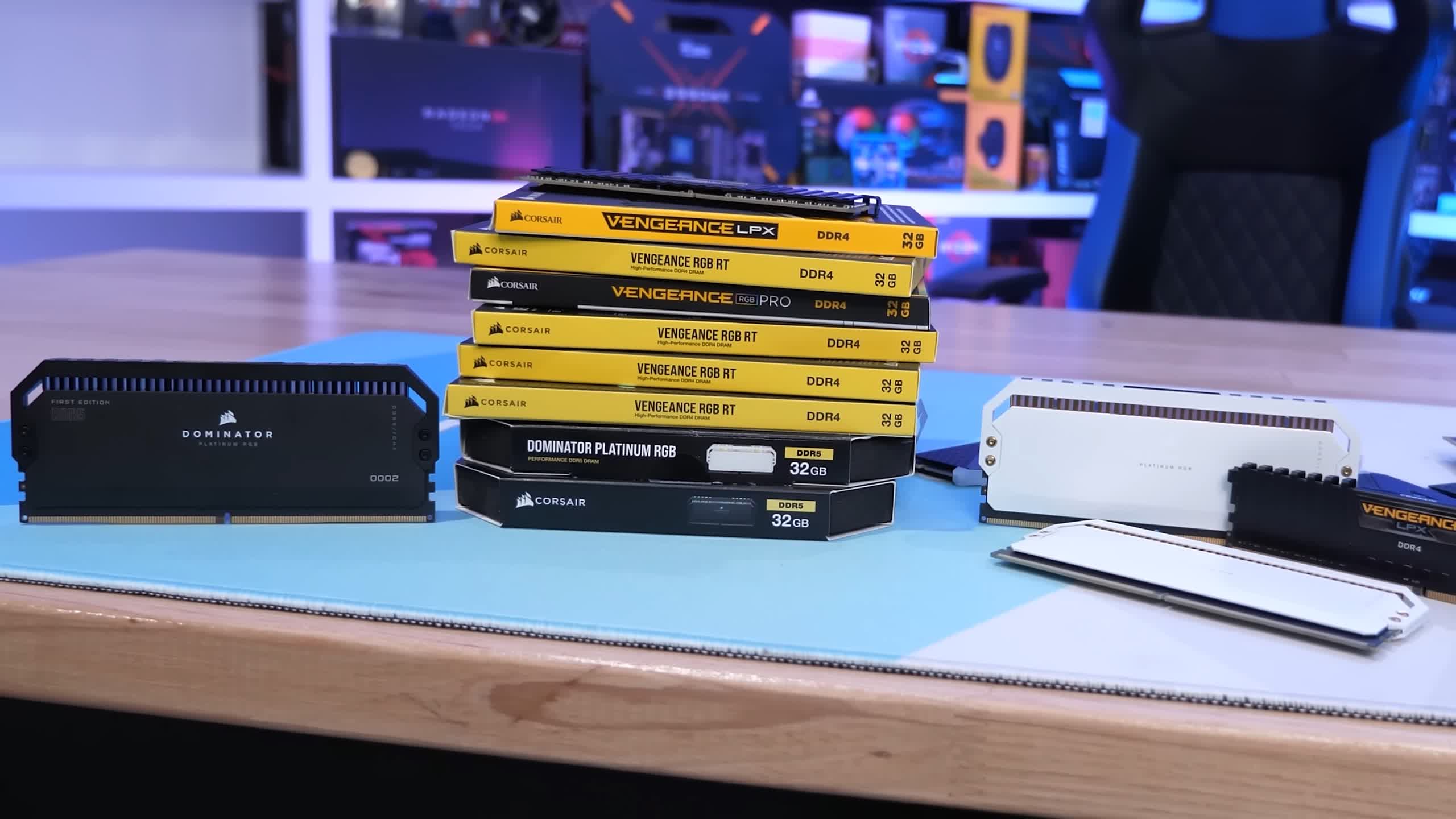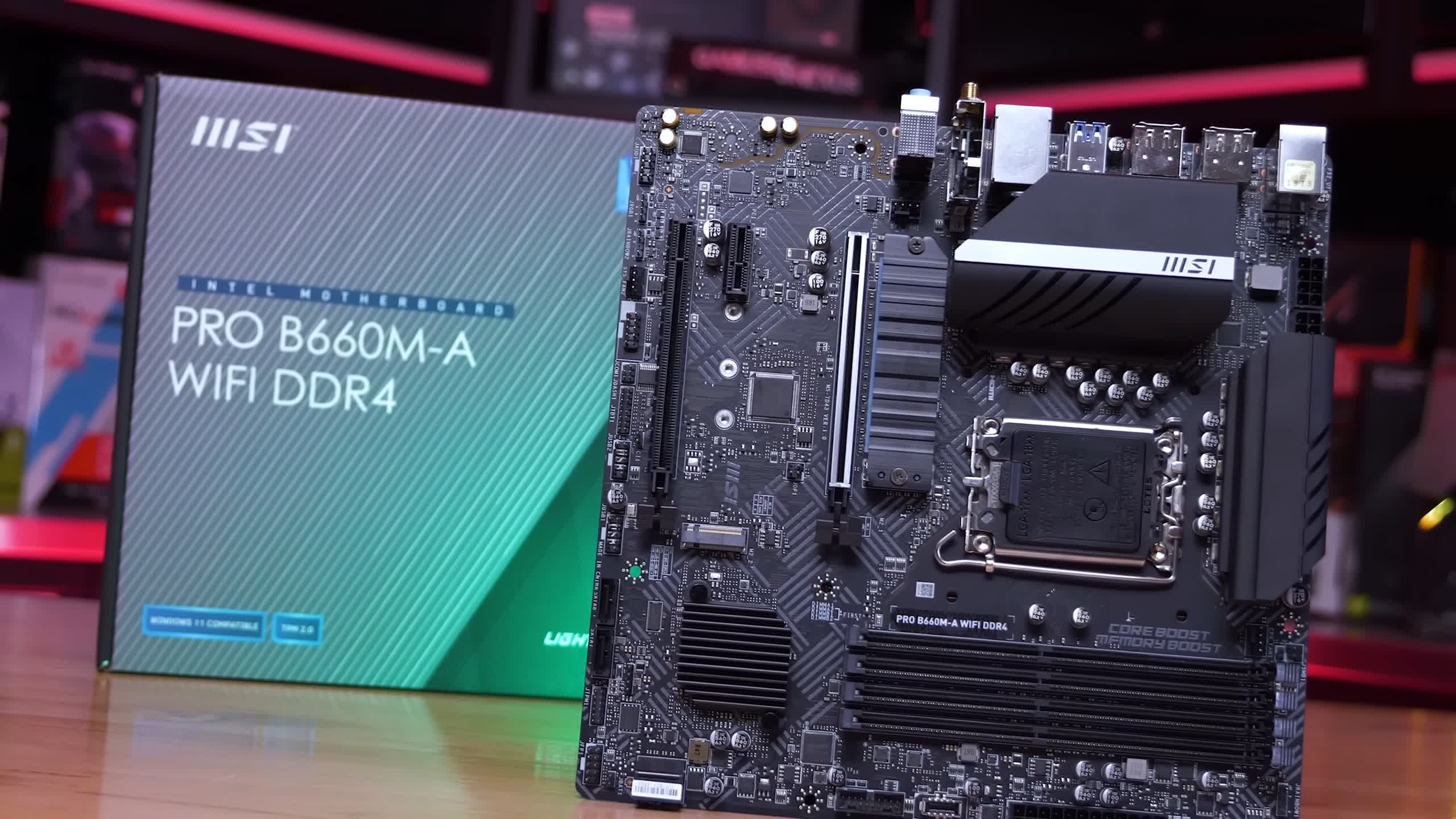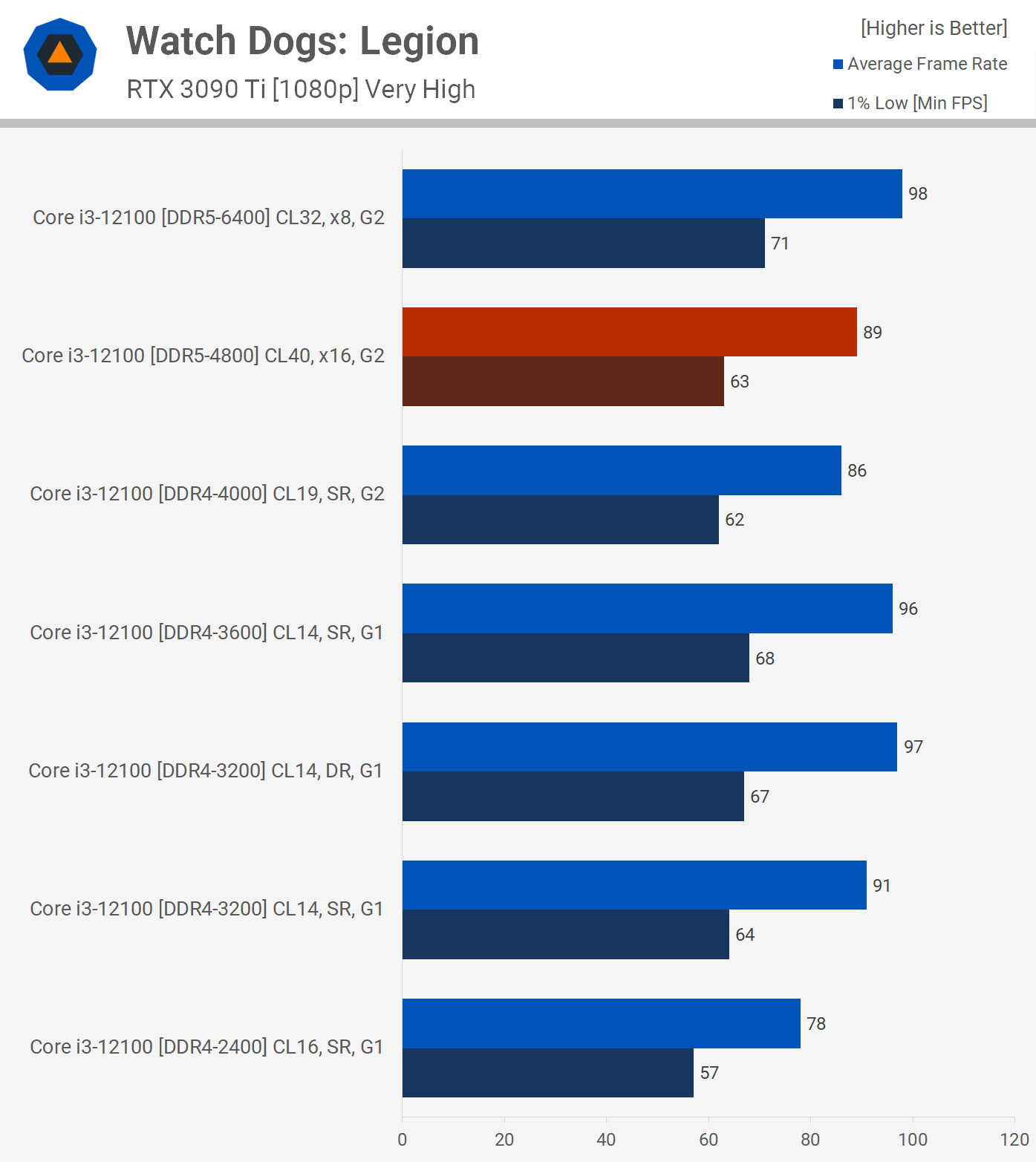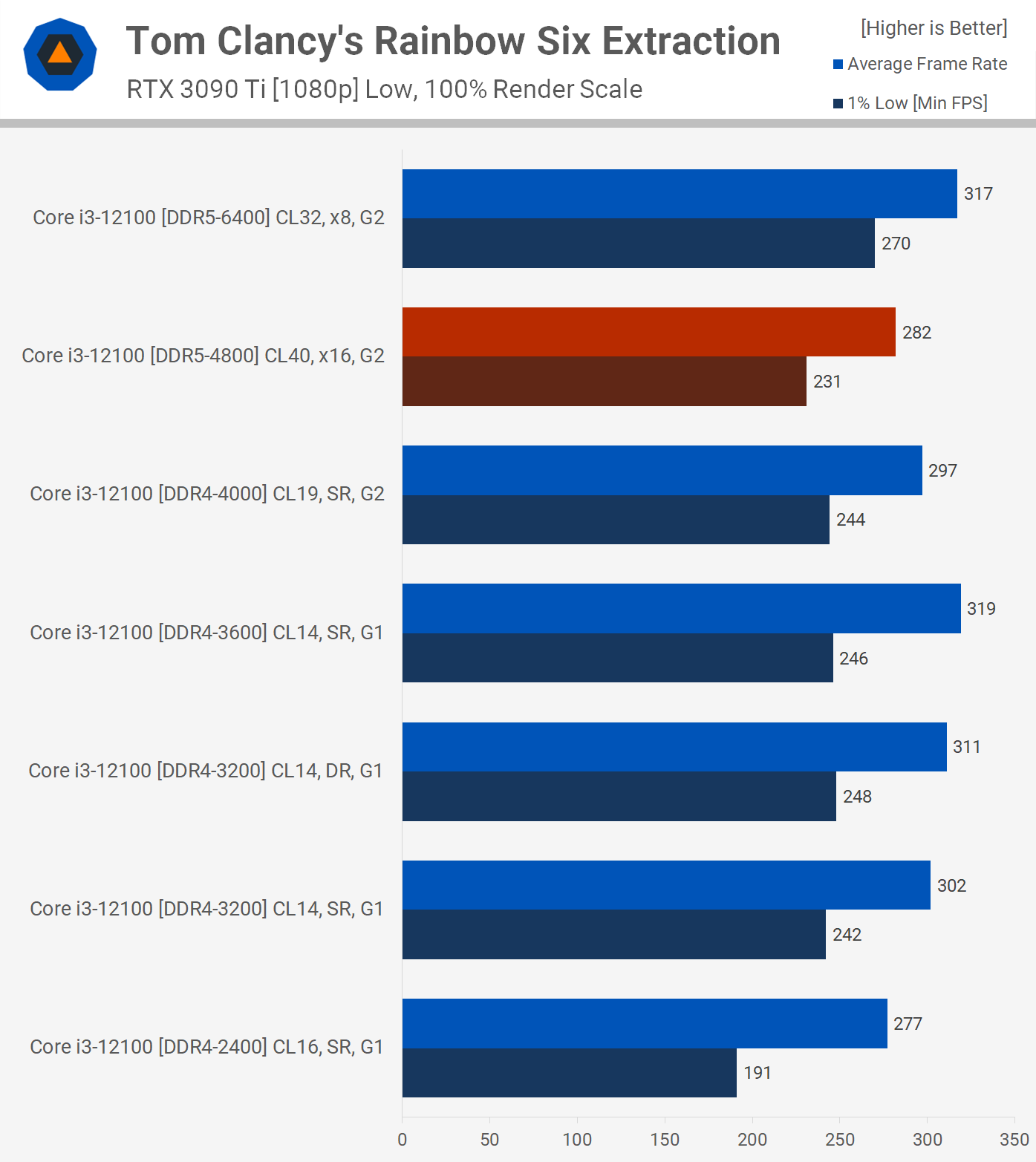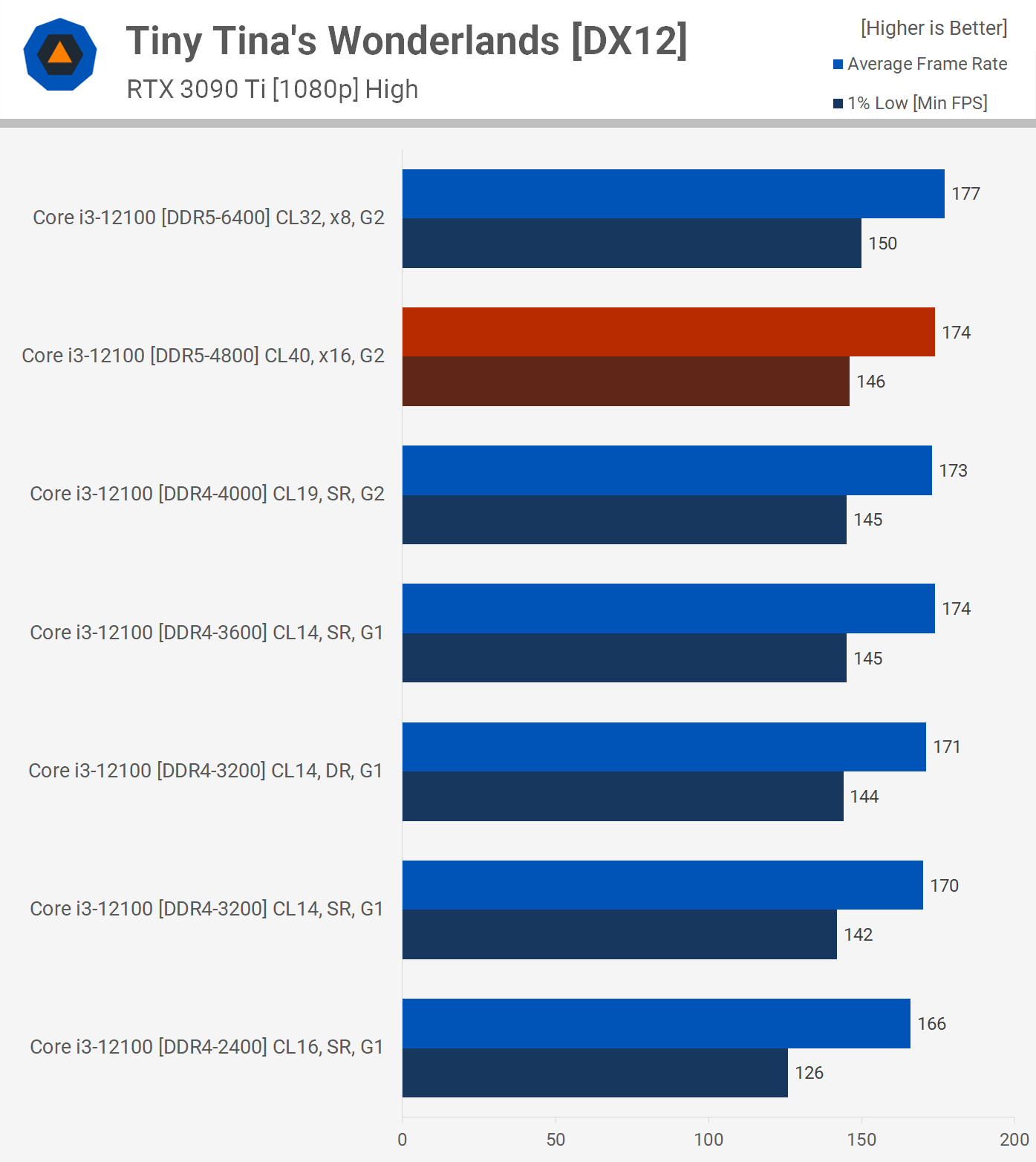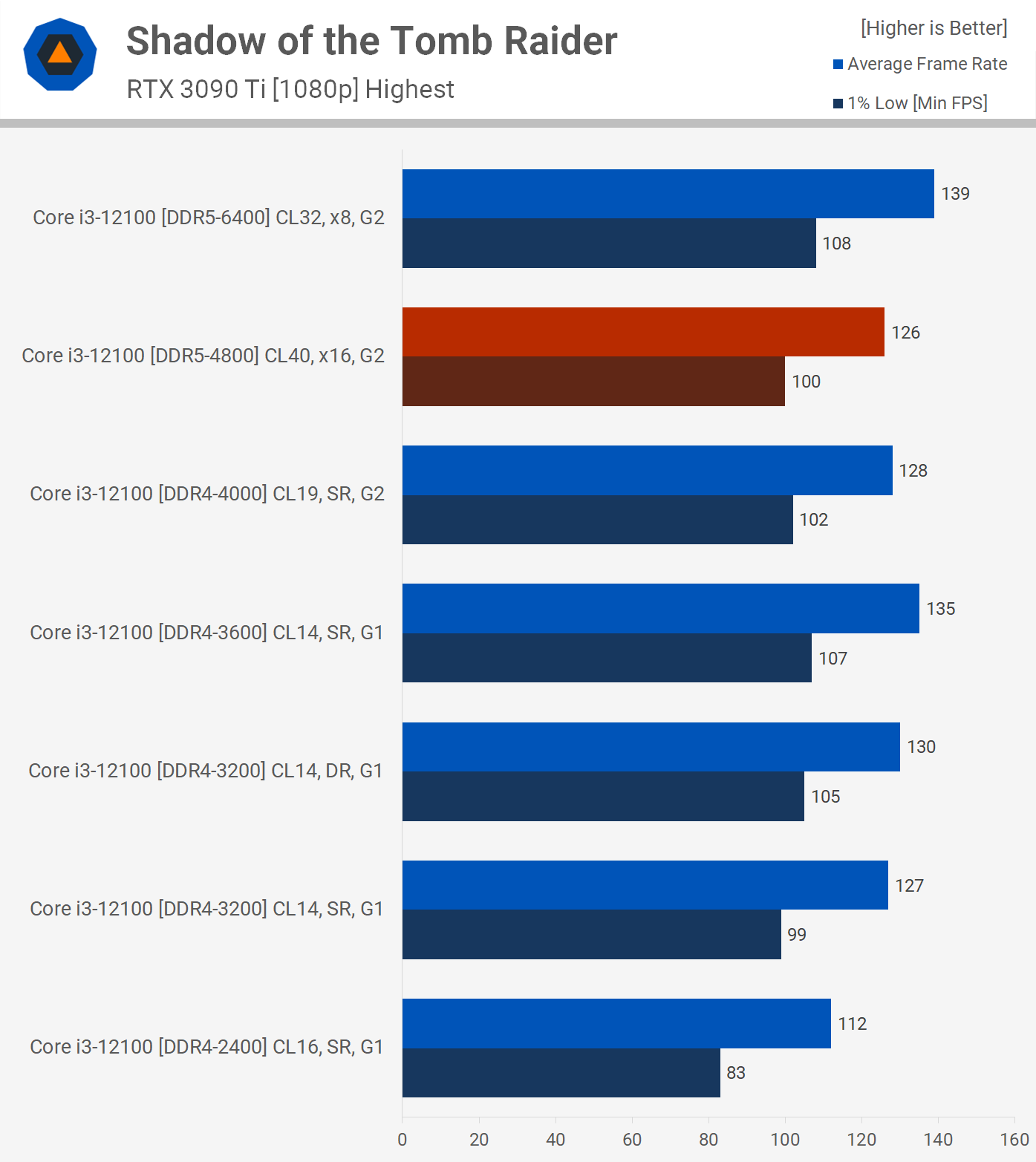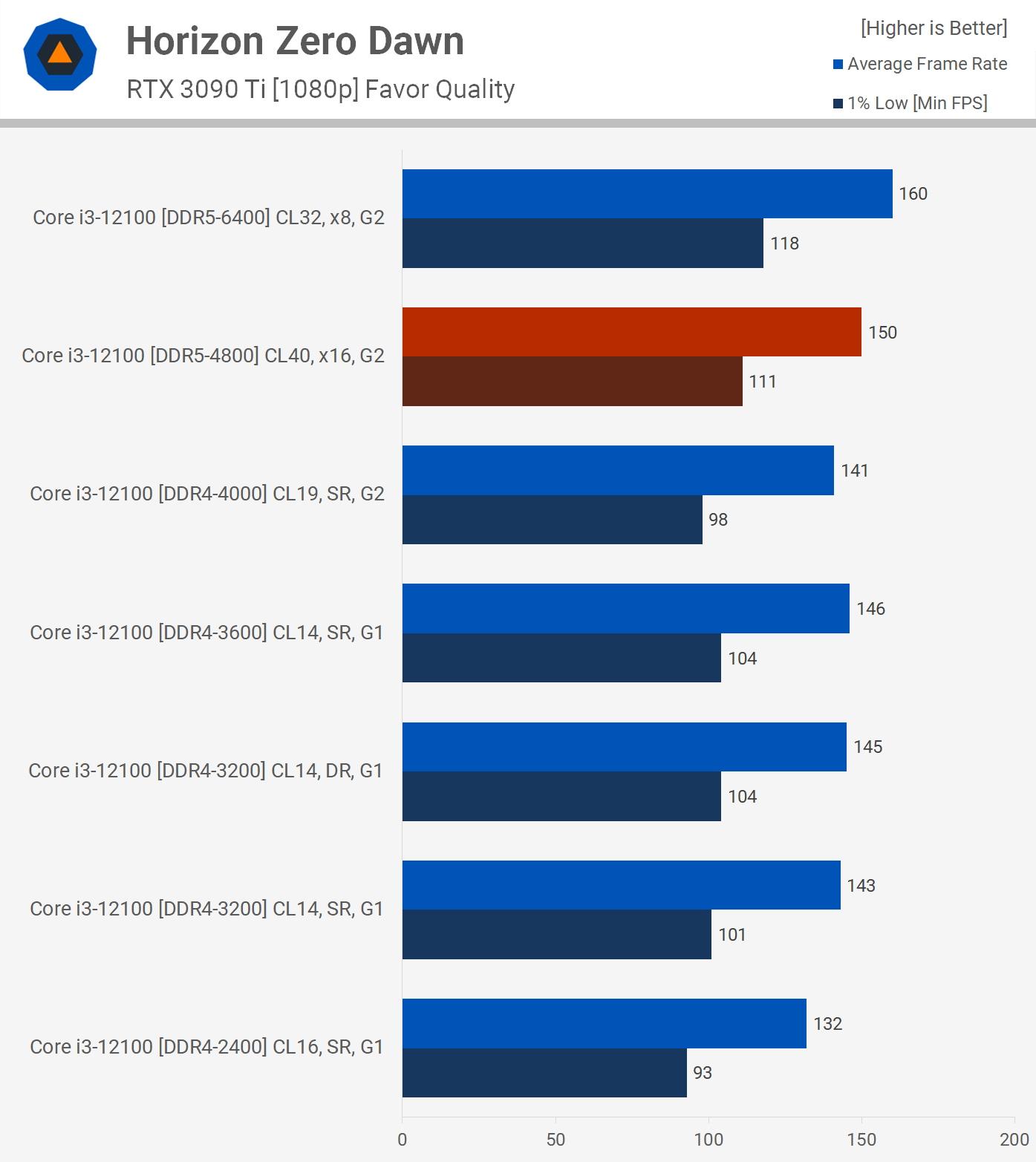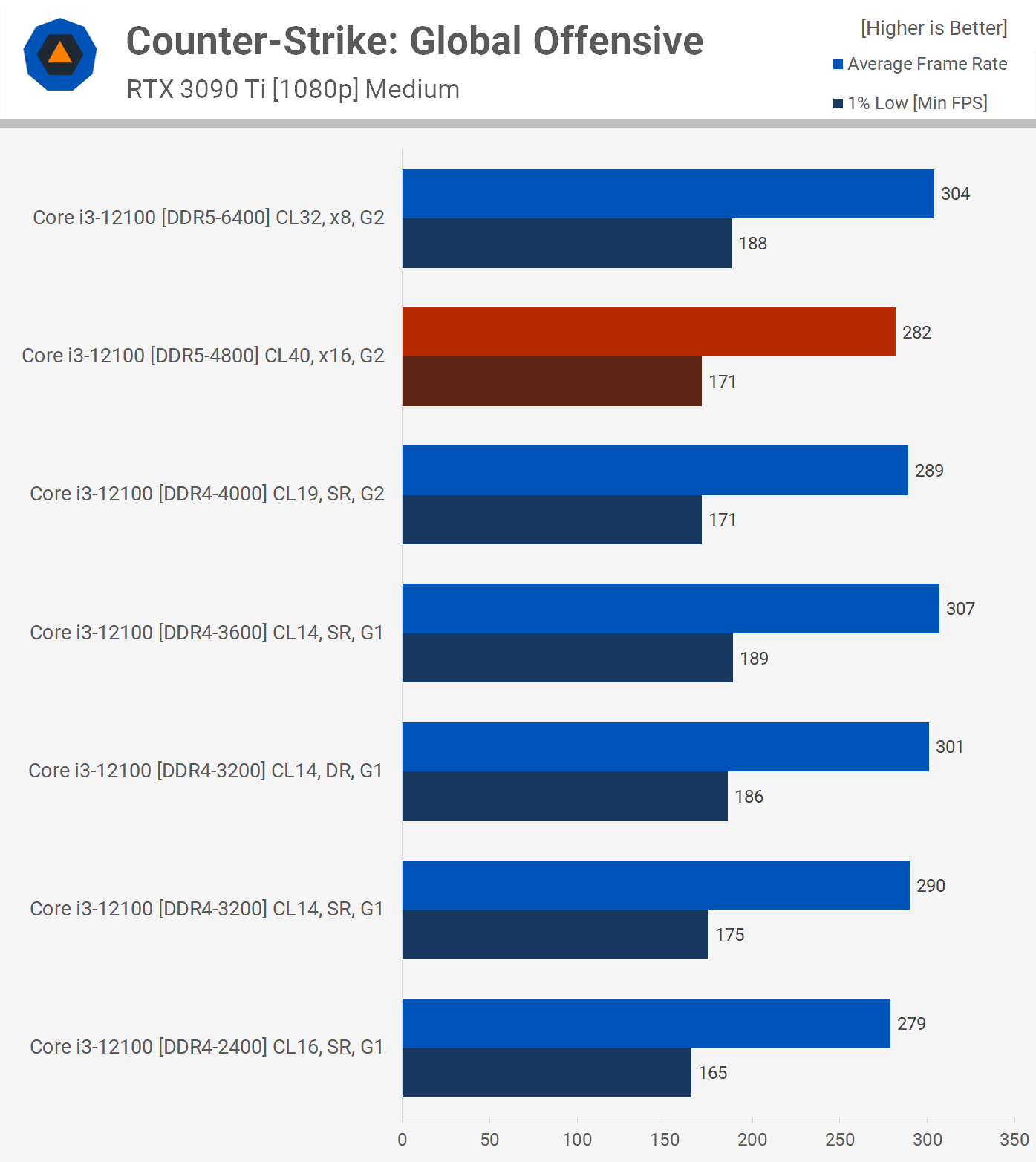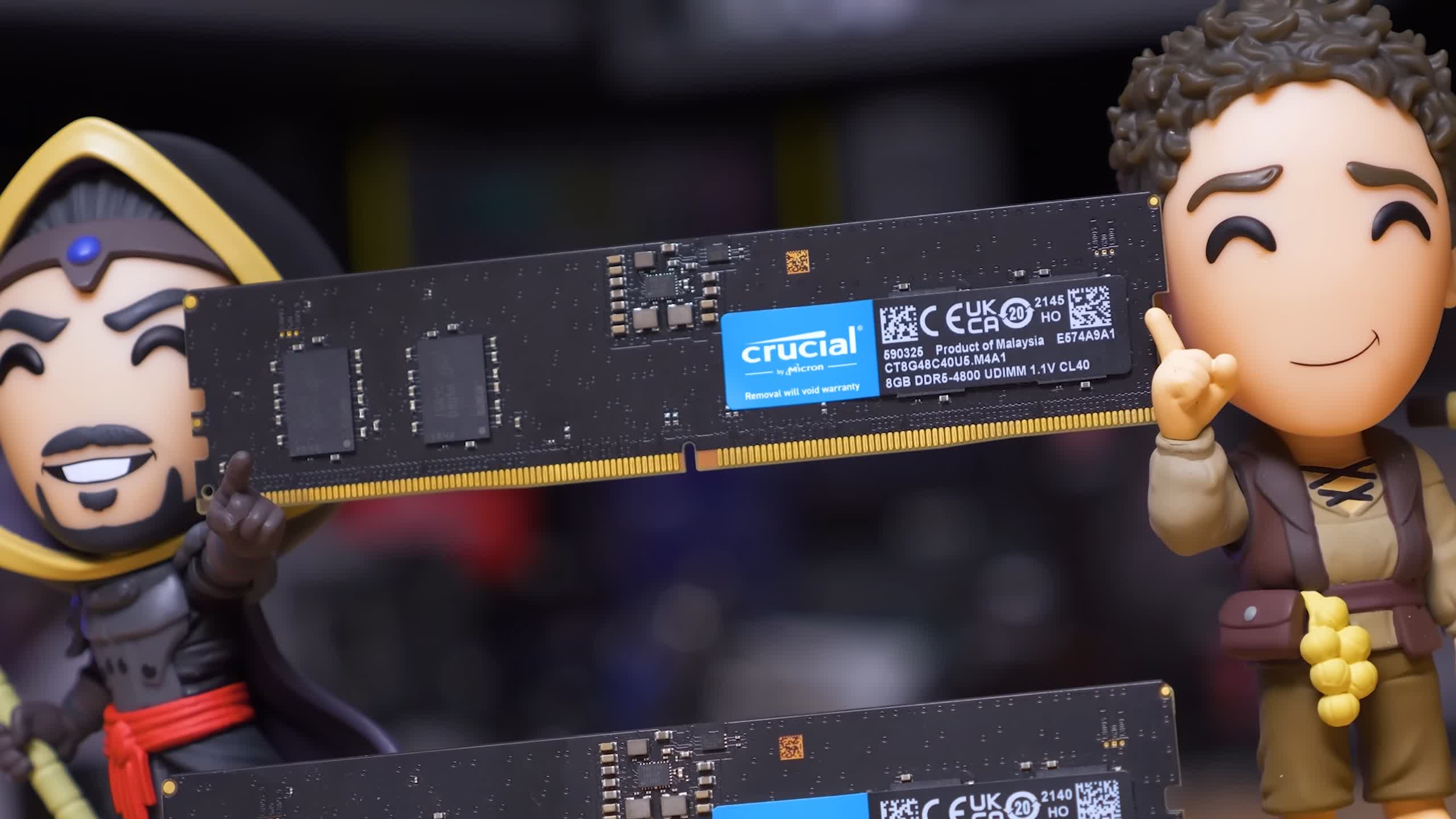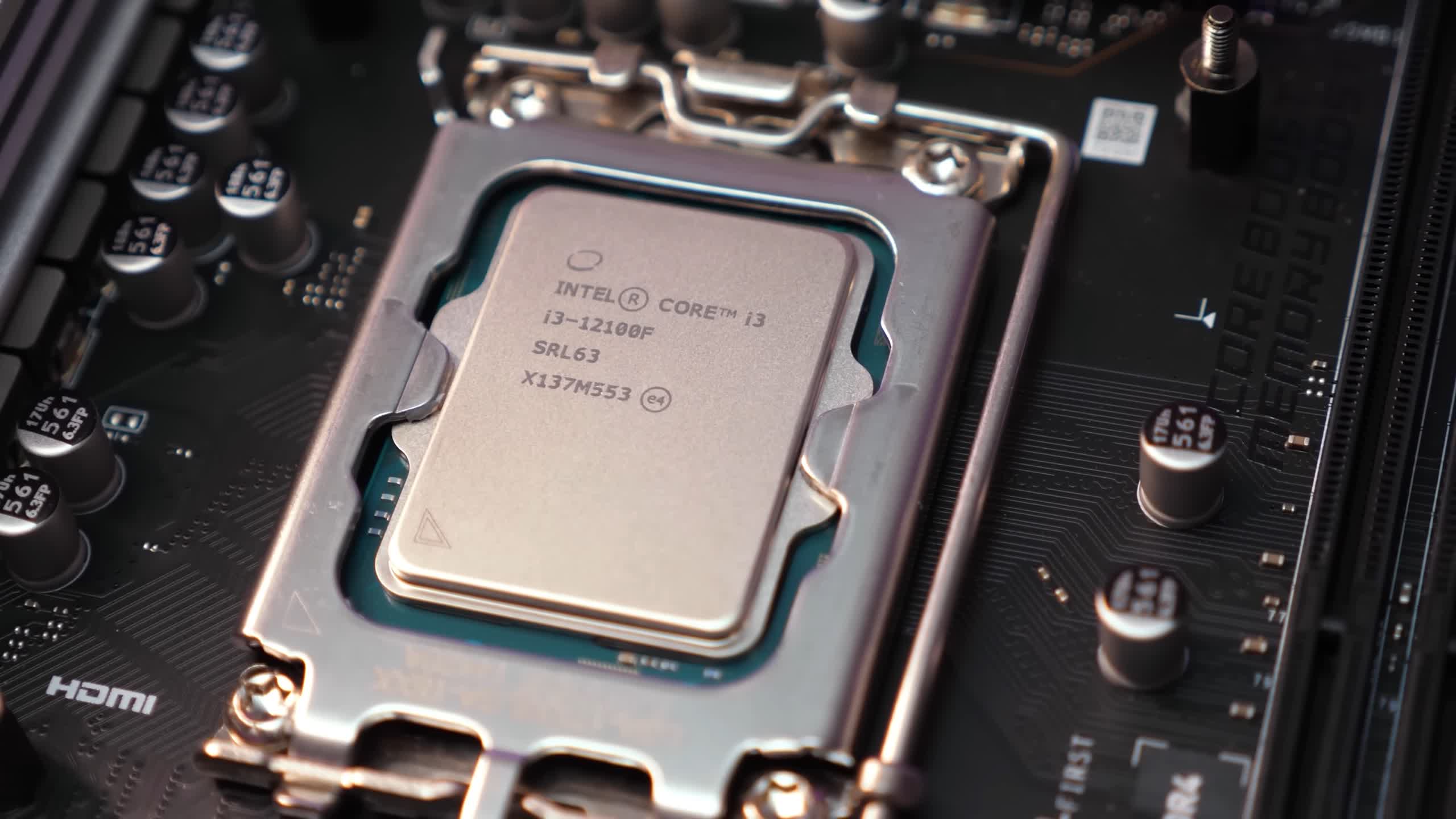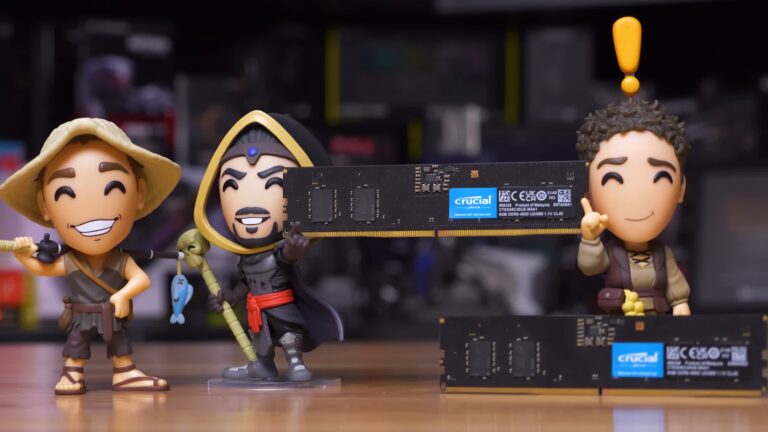
[ad_1]
We recently reviewed the cheapest DDR5 memory we could find to see if that impacted gaming performance and to our surprise it didn’t perform bad at all. In fact, in terms of value it was quite good and with that our recommendation for anyone building a new PC right now, or at any point in the future… it’s time to move on from DDR4.
That’s not to say DDR5 delivers the most bang for buck or that those already using DDR4 should upgrade. Somehow this was the takeaway for some from that previous review, but we assure you that wasn’t what we meant.
What we did mean to say is that if you’re going to build a new PC right now, and that requires you to buy a new motherboard and memory, we feel you’re best off going DDR5 and choosing affordable entry-level 8GB modules, which you can upgrade in the future once DDR5 becomes the mainstream option.
We arrived to this conclusion after testing the cheap Crucial 8GB DDR5-4800 modules alongside the Core i5-12600K which you’d typically pair with a Z690 motherboard. That’s an expensive motherboard to begin with and therefore $84 for some DDR5 means the memory is not a major factor there.
But what about those planning to buy what we believe is the best value budget gaming PC right now: the Core i3-12100. This CPU costs just $130 (or $110 if you opt for the F-SKU). To find out we’re testing again with the DDR5-4800 modules as well as some DDR5-6400 memory for reference, plus a range of DDR4 configurations covering 2400, 3200 and 4000 speeds.
One of the best value B660 motherboards out there is the MSI Pro B660M-A, which retails for $130 for the DDR4 version or $160 for DDR5. That’s a 23% premium just for the DDR5 compatible motherboard. As noted earlier, a 16GB kit of the DDR5-4800 memory costs $84, while 16GB of DDR4-2400 starts at $45. Some premium DDR4-3200 CL14 we like to use in our benchmarks costs $100, and the popular DDR4-4000 CL19 kits cost about $100 as well.
So if you can get comparable performance from premium DDR4 out of the DDR5-4800, it would make sense even to go DDR5 even for budget processors such as the Core i3-12100.
Testing Notes
First a brief disclaimer: our test conditions are geared towards forcing CPU bound scenarios by using the GeForce RTX 3090 Ti at 1080p, often with dialed down quality settings in an effort to maximize frame rates. Depending on the type of games you play, this sort of testing can be unrealistic, but the idea is to highlight the differences in memory performance when you are CPU limited.
The kind of games where we’d say this testing isn’t realistic would predominantly be single player titles — games where you don’t require hundreds of frames per seconds — like Shadow of the Tomb Raider, Cyberpunk 2077, Horizon Zero Dawn and Spider-Man Remastered. When you play these titles, the priority will usually be visual quality, so almost always you’ll be GPU limited, not CPU.
Games where you’re often more CPU limited includes the likes of Rainbow Six, Counter-Strike: Global Offensive, Fortnite, and basically any other competitive esports shooter. Keep this in mind as we go over the results as we’ll be using some of the single player titles previously mentioned for showing the performance differences between the various memory kits.
The graphics card used for all of this testing is the RTX 3090 Ti powered by the Core i3-12100 as we’re interested to see how the most affordable DDR5 memory works with a more affordable CPU. For comparison, we have G.Skill’s Trident Z5 RGB 32GB DDR5-6400 CL32-39-39-102 kit and G.Skill’s TridentZ RGB DDR4-3200 CL14-14-14-34 kit which will be tested with two and four sticks for single-rank and dual-rank configurations, G.Skill’s TridentZ Neo DDR4-3600 CL14-15-15-35 and then we also have Corsair Vengeance RGB Pro DDR4-4000 CL19-23-23-45 memory.
Also please note that non-K 12th-gen Intel CPUs can’t run Gear 1 mode above DDR4-3600, so the DDR4-4000 kit is forced into Gear 2 mode and there’s nothing we can do about that. Therefore you’re better off running at DDR4-3600 and we’ve recently updated these results to include a low latency DDR4-3600 kit, which is a best case for DDR4 when just loading XMP, which is what this feature is centered around.
So with that let’s get into the results…
Benchmarks
Starting with Watch Dogs Legion, we see that the i3-12100 is good for 89 fps on average using the DDR5-4800 memory, which places it roughly on par with the DDR4-4000 memory.
However, it would seem DRAM latency is important here as the CL14 3200 kit was faster than both the 4000 and DDR5-4800. Then when installing another two modules for dual-rank operation, the DDR4-3200 configuration was clearly faster, roughly matching the performance of the DDR5-6400 memory.
Watch Dogs: Legion
Generally speaking, DDR4-3600 CL16 and DDR4-3800 CL18 are comparable to that of our DDR4-3200 CL14 memory when it comes to gaming performance, and that means in this example DDR5-4800 is comparable in terms of performance to popular DDR4 memory.
The point is that the performance difference showed here is not significant, which is why we feel the time is finally right to start moving to DDR5 for new system builds.
The DDR5-4800 memory doesn’t fare as well in Rainbow Six Extraction, but we’re not seeing significant performance differences anyway, especially since we’re using an RTX 3090 Ti at 1080p.
For a similar price, DDR4 memory can offer ~7% more performance, so not exactly an earth shattering difference and we think most of you will cope with well over 200 fps at all times.
Hitman 3
Hitman 3 really benefits from DDR5 memory, with the base 8GB 4800 kit beating all DDR4 modules we tested, even our dual-rank low-latency DDR4-3200 memory.
When compared to DDR4-4000, the DDR5-4800 kit was 6% faster on average. Certainly not a large margin, but for similar money you might as well opt for DDR5 now, at least based on these results.
Tiny Tina’s Wonderlands
Next we have Tiny Tina’s Wonderlands, which is a good representation of typical gaming performance. That’s to say you’ll almost always be bound by your graphics card.
In this game everything above DDR4-2400 is fine with the Core i3-12100. Of course, this might not be the case with more powerful CPUs, graphics cards and future games, but today many games, especially singer-player titles will be GPU bound and this is what the results will look like… all much the same.
F1 22
Moving on to F1 22, despite the test conditions which should see the CPU become the performance limiting component, with the exception of the DDR4-2400 configuration, the game was largely GPU bound.
Sure, average frame rates were a bit higher with the DDR5-6400 memory — 1% lows were around 12% better — but we’re only looking at single-digit gains from DDR4 to DDR5-6400.
The 8GB 4800 sticks were a little weaker here, but given you’re basically getting DDR4 performance you might as well make the switch for a new build as it ensures a superior upgrade path.
Spider-Man Remastered
As noted in our previous budget DDR5 review, most gamers using a high-end GPU like the RTX 3090 Ti will want to game at 4K when playing Spider-Man Remastered and in this scenario you will be almost entirely GPU bound.
Still, using this game as an example of CPU-bound performance (at a lower resolution) we see that DDR5-4800 is able to match DDR4-4000 as well as our low-latency DDR4-3200 memory. That’s a positive result despite the fact that the 6400 stuff was almost 30% faster when looking at 1% lows.
Shadow of the Tomb Raider
Shadow of the Tomb Raider is another CPU demanding title, though the Core i3-12100 is more than powerful enough and will enable well over 100 fps should your graphics card be capable of such frame rates.
We find again that DDR5-4800 is comparable to DDR4-3200 low latency up to DDR4-4000. It’s not until you go as low as 2400 that you’ll see a noticeable performance decline.
Although DDR5-4800 is a good bit slower than 6400, it’s not worth paying the premium for high-speed DDR5 just yet, but for those of you building a new PC from the ground up right now, these 8GB modules are a pretty good stop-gap.
Horizon Zero Dawn
Horizon Zero Dawn shows that even budget DDR5 memory can provide a performance advantage over DDR4 — it’s not a big one — but even so, the value for money that we’re seeing from the 8GB 4800 memory is impressive, beating all tested DDR4 configurations.
Cyberpunk 2077
It’s a similar story in Cyberpunk 2077. Here the DDR5-4800 kit was a whisker faster than all tested DDR4 kits, though overall performance was much the same.
Assetto Corsa Competizione
As seen before, ACC is one of those games where memory latency really matters, though again if we cranked up the quality settings or used a lesser GPU, you’d certainly see these margins tighten.
In any case, the DDR5-4800 memory wasn’t that impressive here as the DDR4-3200 single-rank configuration was 13% faster. If these results were the norm then it would be hard to say if you should take the plunge with these budget 8GB DDR5 sticks and hold out for 6 – 12 months before DDR5 pricing improves further for the more premium stuff.
The Riftbreaker
The DDR5 memory performs well in the The Riftbreaker. We’re running the canned CPU benchmark with ray tracing disabled here and in short DDR5-4800 is comparable to low latency DDR4-3200 as well as DDR4-4000, while DDR5-6400 offers a ~15% performance bump under these conditions.
Counter-Strike: Global Offensive
CS:GO performance isn’t influenced too heavily by memory performance. The DDR4-3200 dual-rank configuration along with DDR5-6400 provided the best results, but we’re talking about a ~9% margin between DDR4-2400 and DDR5-6400, so memory performance doesn’t really matter. It’s all about single-core performance and for that DDR4-2400 generally provides enough bandwidth.
12 Game Average
Here’s a look at the 12 game average, calculated using the geomean, and as you can see the 8GB DDR5-4800 modules are comparable to DDR4, whether that’s DDR4-4000 or even low latency DDR4-3600 memory where it was just 5% slower.
As a side note, it’s interesting that from 2400 to 3200 we’re looking at a 33% frequency increase, while the higher clocked memory operated at much tighter timings and overall that netted us 12% more performance.
Then from 4800 to 6400 is another 33% frequency increase and that saw a 10% boost to frame rates. It stands to reason that in the future with more demanding games, DDR5 will look more impressive. Should that be the case, investing now in a DDR5 platform without blowing the budget on premium modules might not be a bad idea.
What We Learned
Does it make sense to go DDR5 now, even for budget builds? If the aim is to save every last dollar, then no. But if you’re looking at purchasing a decent motherboard and some half decent memory, then we think yes, it is worth it.
As noted in the introduction, the DDR5 version of the MSI Pro B660M-A motherboard costs $30 more, but you stand to save around half that on the cheaper DDR5-4800 memory compared to to DDR4-4000 or quality DDR4-3200 CL14. So in this example, once you factor in the price of the CPU and motherboard, the DDR5 option ends up costing no more than 5% more.
The advantage of doing that is that once DDR5 pricing settles down and higher quality low latency kits arrive, you can upgrade your memory which could potentially unlock additional performance in future games, or allow you to better utilize a next generation GPU.
None of this is to say you should upgrade to DDR5 if you already have a perfectly capable PC using DDR4. Moreover, with next-gen hardware on the horizon, waiting now is probably the best strategy. But all that aside, it’s great to see DDR5 pricing nudging closer to that of DDR4 and it appears to be happening rapidly with massive price drops over the past few months.
In closing, if we were building a new Intel Alder Lake PC today, we’d almost certainly grab a DDR5 board, throw two cheap 8GB 4800 sticks on it and get gaming.
Shopping Shortcuts:
[ad_2]
